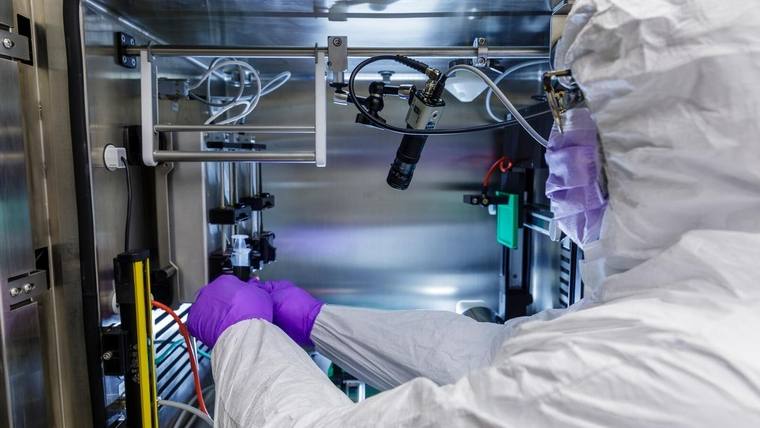-
Electrospinning biotherapies of tomorrow

The future of healing disease may involve a syringe, a high voltage power supply and polymer solutions coming together to engineer tissue. Mayo Clinic researchers are studying these different elements now using an electrospinner, a device that whips biotherapeutic fibers into a scaffold — or platform — for spinning regenerative biotherapeutics.
An electrospinner is almost like a medical spinning wheel or loom. An electrospinner unleashes electrical forces that churn chemical solutions into nano- or microscopic fibers. That, in turn, creates a porous base favorable for growing replacement cells.
"An electrospinner can mimic or produce a matrix of proteins and molecules that provide a platform for growth and to develop tissues, similar to what's found in our bodies," says Cheryl Myers, Ph.D., an immunobiologist at Mayo Clinic in Arizona who studies regenerative science applications. "It's kind of like when you build a house, you need the foundation and the structure before you can start putting the siding on the on the walls. Electrospinning provides the foundation for cellular growth and tissue regeneration."
A researcher at Mayo Clinic in Arizona uses the electrospinner to study tissue regeneration.
Mayo Clinic in Arizona has two electrospinners for regenerative science research. Mayo Clinic's Center for Regenerative Biotherapeutics supports this work as part of its objective of delivering new cures.
Tissue engineering as a possible healing biotherapy
The body's ability to regenerate new cells and tissue varies greatly. Some tissue, such as skin, has strong ability to regenerate. However, tissue that is not connected to blood supply, such as cartilage, does not regrow and restore itself. The result can be conditions such as osteoarthritis in the knee or hip that have no therapy other than artificial joint replacement.
Tissue engineering is an emerging technology that offers hope for replacing and repairing damaged cells, tissue or organs. Scientists are also studying whether the electrospinner technology could be used to regenerate bones, cartilage and blood vessels.
"Depending upon the types of solvents and polymers (large molecules) you are using with the electrospinner, we can spin a small fiber structure that provides a platform for replacement tissue for to test therapeutics for damaged hearts, muscle or tendons," says Dr. Myers.
Dr. Myers and the rest of the team are using the electrospinner to test the ability to regenerate tissue for healing disorders that currently have few therapeutic options. For example, they are evaluating whether the machine could spin tissue that could grow into a 3D bioprinted larynx implant and restore function for patients who've lost part of their larynx to disease.
The team is also studying whether these healing solutions might become possible through electrospinner research:
- Skin patches to heal chronic, nonhealing wounds that have not responded to other treatments.
- Orthopedic patches to regenerate damaged cartilage around the rotator cuff in the shoulder.
"It's very exciting research. We're limited only by our imagination when it comes to electrospinner research," says Dr. Myers. "We hope one day to incorporate cells from the patient for an individualized approach to tissue engineering."
As with most scientific studies, the researchers must address challenges as they bring new tools to clinical care. Dr. Myers and the team are trying to understand the proper chemical compounds, growth factors and cells needed to grow tissue. This technology would require additional testing in clinical trials if it were to advance toward patient care.
###
Related stories:
Bringing regenerative technology of the future to patients today
Mayo Clinic opens a second Regenerative Medicine Therapeutics Suites







